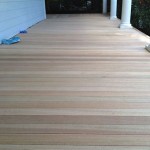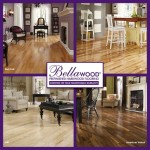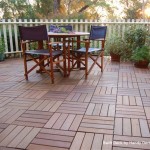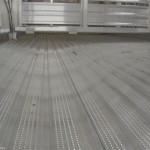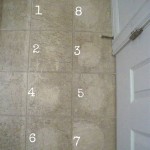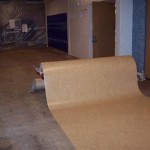Hardwood Flooring in Cedar Rapids, Iowa: A Comprehensive Guide
Hardwood flooring remains a popular choice for homeowners in Cedar Rapids, Iowa, and across the country. Its enduring appeal stems from its aesthetic versatility, durability, and the value it adds to a property. Understanding the nuances of hardwood flooring – from the types available to the installation and maintenance requirements – is crucial for making an informed decision that aligns with individual needs and preferences.
Cedar Rapids, located in eastern Iowa, experiences a climate characterized by distinct seasons, including hot, humid summers and cold, dry winters. These seasonal fluctuations impact the moisture content of wood, making careful consideration of hardwood species and construction methods essential for longevity and performance in the local environment.
Understanding Hardwood Varieties and Their Characteristics
The hardwood flooring market offers a diverse selection of wood species, each possessing unique characteristics that influence its appearance, hardness, and suitability for different applications. Determining the appropriate species is a critical first step in the selection process.
Oak is arguably the most prevalent hardwood flooring option in the United States. Red oak is slightly softer and more porous than white oak, readily accepting stains and finishes. White oak, on the other hand, is denser and more water-resistant, making it a suitable choice for areas prone to spills or moisture. Both oak varieties offer excellent durability and a classic aesthetic.
Maple is another widely used hardwood, known for its light color and subtle grain patterns. It provides a clean, contemporary look and is generally harder than oak, making it more resistant to dents and scratches. However, maple can be more challenging to stain evenly due to its closed grain structure.
Hickory is among the hardest and most durable domestic hardwoods. Its distinctive grain patterns and color variations provide a rustic and characterful appearance. Hickory is an excellent choice for high-traffic areas and homes with pets.
Cherry offers a rich, reddish-brown hue that deepens over time with exposure to light. While aesthetically pleasing, cherry is a softer hardwood and more susceptible to dents and scratches than oak or maple. It is often favored for formal living spaces and bedrooms where durability demands are lower.
Walnut is a premium hardwood prized for its dark, chocolate-brown color and elegant grain patterns. It is softer than oak and maple, but its luxurious appearance and stability make it a desirable choice for high-end homes.
Beyond these common species, exotic hardwoods such as Brazilian Cherry (Jatoba), Tigerwood, and Ipe offer unique aesthetics and exceptional hardness. However, these options typically come with a higher price point and may have environmental sustainability considerations to take into account.
Engineered Hardwood vs. Solid Hardwood: Making the Right Choice
In addition to selecting the wood species, homeowners must decide between solid hardwood and engineered hardwood flooring. Each type offers distinct advantages and disadvantages, making one more suitable than the other depending on the specific application and environmental conditions.
Solid hardwood flooring consists of planks milled from a single piece of wood. It is typically ¾ inch thick and can be sanded and refinished multiple times throughout its lifespan, allowing for restoration and customization. Solid hardwood is generally more expensive than engineered hardwood but offers superior longevity and the potential for future refinishing.
Engineered hardwood, conversely, is composed of multiple layers of wood veneer bonded together. The top layer, or wear layer, is made of the desired hardwood species, while the underlying layers are typically made of plywood or fiberboard. Engineered hardwood offers greater dimensional stability than solid hardwood, making it less susceptible to warping and cupping in response to changes in humidity. This makes it a more suitable choice for installation in basements or over concrete slabs.
One of the primary advantages of engineered hardwood is its versatility in installation methods. It can be installed using a variety of techniques, including gluing, nailing, stapling, or floating. This flexibility allows for installation over virtually any subfloor surface.
The thickness of the wear layer on engineered hardwood determines its refinishing potential. Thicker wear layers allow for more sanding and refinishing cycles, extending the lifespan of the floor. However, engineered hardwood cannot be refinished as many times as solid hardwood.
The choice between solid and engineered hardwood ultimately depends on the specific needs and priorities of the homeowner. Solid hardwood offers superior longevity and refinishing potential, while engineered hardwood provides greater dimensional stability and installation versatility.
Installation Considerations and Maintenance Practices in the Cedar Rapids Climate
Proper installation is paramount to the long-term performance and appearance of hardwood flooring. In Cedar Rapids, Iowa, with its fluctuating humidity levels, acclimation of the wood flooring prior to installation is crucial to prevent warping, cupping, and gapping.
Acclimation involves allowing the hardwood flooring to adjust to the temperature and humidity of the installation environment for several days or even weeks before installation. This allows the wood to expand or contract to its equilibrium moisture content, minimizing the risk of dimensional changes after installation.
The subfloor must be properly prepared before installing hardwood flooring. It should be level, clean, and dry. Uneven subfloors can lead to uneven flooring surfaces and premature wear. Moisture barriers are essential when installing hardwood flooring over concrete slabs to prevent moisture from seeping into the wood.
The installation method should be carefully chosen based on the type of hardwood (solid or engineered), the subfloor material, and the homeowner's preference. Nailing or stapling is the most common method for installing solid hardwood over a wood subfloor. Gluing is often used for engineered hardwood installations, providing a secure and stable bond. Floating installations involve interlocking planks without attaching them to the subfloor, allowing the floor to expand and contract freely.
Following proper installation, regular maintenance is essential to preserve the beauty and longevity of hardwood flooring. This includes regular sweeping or vacuuming to remove dirt and debris, which can scratch the finish. Damp mopping with a pH-neutral wood floor cleaner is recommended for occasional cleaning. Avoid using excessive water or harsh chemicals, as these can damage the finish and wood.
Preventative measures can also help protect hardwood flooring from damage. Using area rugs in high-traffic areas and placing felt pads under furniture legs can minimize scratches and dents. Controlling humidity levels in the home can help prevent warping and cupping. Maintaining a consistent humidity level between 30% and 50% is generally recommended.
Refinishing is an option for restoring hardwood flooring that has become worn or damaged over time. This involves sanding the old finish and applying a new coat of sealant and finish. Solid hardwood can be refinished multiple times, while engineered hardwood can be refinished depending on the thickness of its wear layer. A professional flooring contractor can assess the condition of the floor and determine the appropriate refinishing procedure.
In conclusion, selecting and maintaining hardwood flooring in Cedar Rapids, Iowa, requires careful consideration of various factors, including wood species, construction type, installation method, and maintenance practices. By understanding these nuances, homeowners can make informed decisions that ensure the beauty, durability, and longevity of their hardwood floors.

Freund S Hardwood Flooring Updated April 2024 11 Photos Cedar Rapids Iowa Phone Number Yelp

Freund S Hardwood Flooring Updated April 2024 11 Photos Cedar Rapids Iowa Phone Number Yelp

Hardwood Floors In Cedar Rapids Flooring Services Ia One Touch

Hardwood Cedar Rapids Randy S Flooring

Hardwood Cedar Rapids Randy S Flooring

Gray S Hardwood Flooring Updated April 2024 830 33rd Ave Sw Cedar Rapids Iowa Phone Number Yelp

Hardwood Cedar Rapids Ia Thompson Floors

Hardwood Floors Homestead Ia Corridor Floor Care

Laminate Cedar Rapids Randy S Flooring

Freund S Hardwood Flooring Updated April 2024 11 Photos Cedar Rapids Iowa Phone Number Yelp
Related Posts

